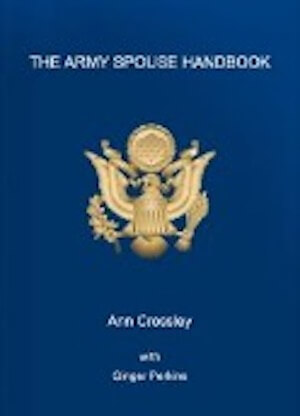 The weather is warming, days are longer, birds are singing, and new duty stations are the talk on every installation! It’s the time of year when the military ramps up its social engagements and traditions; the busy season is fast approaching.
The weather is warming, days are longer, birds are singing, and new duty stations are the talk on every installation! It’s the time of year when the military ramps up its social engagements and traditions; the busy season is fast approaching.
To help you prepare for the influx of invitations and mandatory fun events, your M:M Protocol and Traditions Team offers up some friendly reminders from our collective experiences.
Invitations
This is the most informative part of every event. Not only does the invitation provide the when and where, it will also list the type of dress. If no dress is indicated, consider the type of event and the time of day.
For ceremonies, choose a nice dress or business casual pants and top; this is usually indicated as “informal” on the invitation. For social gatherings in the afternoon, business casual is appropriate; in the evening, a dressier outfit may be more fitting.
Gifts for the hosts aren’t necessary unless the event is at someone’s home.
Remember: Casual doesn’t mean jeans unless indicated on the invitation. Refer to the dress term chart for more details.
RSVPs
Unless it says “regrets only,” R.s.v.p. (répondez s’il vous plaît) means you need to respond whether you’re attending or not. If you’ve ever hosted an event, you know how difficult it is to plan without an accurate headcount.
If you are unable to attend an event you’ve said “yes” to, make sure to let the hosts know.
Remember: It’s impolite to bring uninvited guests or ask the hosts if your visiting friends or relatives can attend.
Ceremonies
 Stand when receiving any type of gift or award. If you are the outgoing or incoming spouse at a ceremony, stand when your flowers are presented, and remind children and family members to also stand if receiving token items.
Stand when receiving any type of gift or award. If you are the outgoing or incoming spouse at a ceremony, stand when your flowers are presented, and remind children and family members to also stand if receiving token items.
Whether an indoor or outdoor event, stand when the flag passes in front of you and remain standing until it is posted or retired; this is true for parades, games, balls, ceremonies, and any time the U.S. flag is present.
Remember: The unit pin is closest to your heart (on the left) and the name tag is on the right.
A Formal Affair
Attire: A floor-length gown, dark suit, or tuxedo is the appropriate attire for civilians at a military ball indicated by “formal” on the invitation. To avoid any major mishaps, make sure you are adequately covered by the gown you choose. Short dresses are for cocktail parties and dining-ins and may be indicated as “semi-formal” on the invitation.
Receiving line: All guests need to go through the receiving line. Keep your comments short; do not bring your drink, food, cigarette, dog, or baby.
The jackets of uniformed personnel should remain on until the end of the formal portion, lest you be seen as out of uniform. Don’t go barefoot; bring something comfortable to change into for dancing.
Do not sit in your chair or begin eating until signaled to do so by the Master of Ceremony.
Follow the program for toasts. The Fallen Soldier Toast is silent without drinking; non-alcoholic beverages are acceptable for toasting; and don’t drink a toast to yourself.
Remember: Be mindful of how much you and your date are drinking; this isn’t Vegas.
Children and Pets
Unless a registered service animal, pets should never be brought to any event. Peacocks and tea-cup chihuahuas are not service animals.
Unless indicated as “family friendly” or “children welcome,” it is inappropriate to bring your children under the age of 18. It is never appropriate to bring underage children to any formal event.
An official ceremony at which your Soldier is the one being honored, such as a change of command, is the exception to children attending but does not extend to a ball.
Remember: Bow ties and tiaras make kids and pets look cute, but don’t make them party guests.
Lynda and Ginger wish you a fun and exciting “busy season!”
Keep these easy tips at hand for quick reference.
Remember: When in uniform, your soldier is a representative of the United States Army, and by association, so are you.
Please be respectful!
*For more from the P & E Team, visit them on their M:M Expert Author Page.








0 Comments